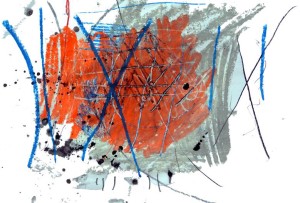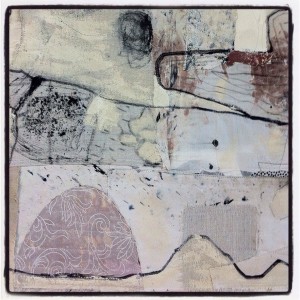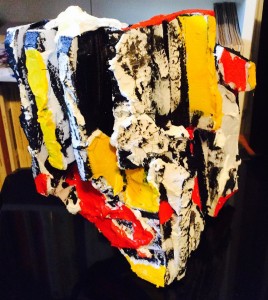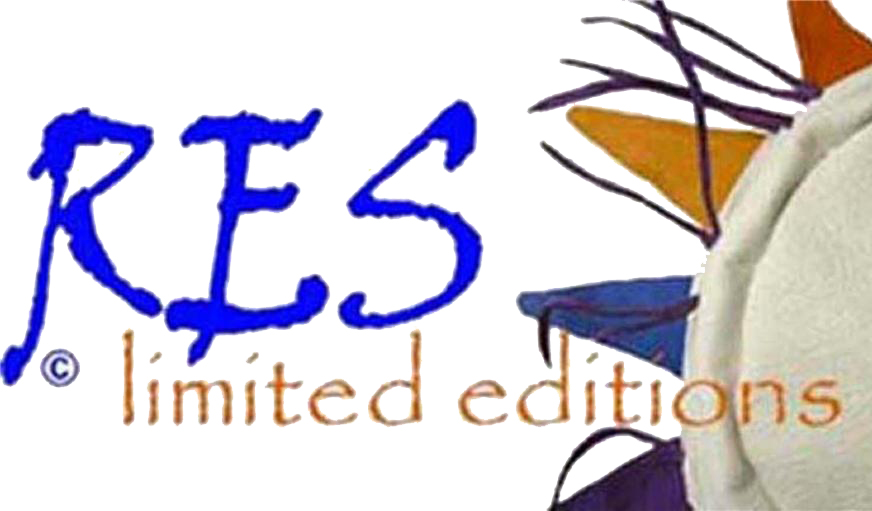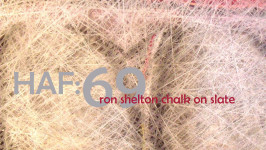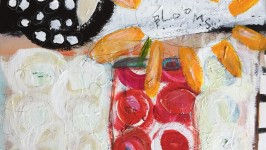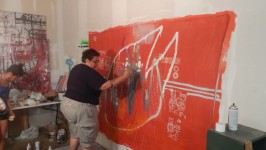HAF 66: 3 Artists 3 Studios – Crane, Bono, Heft
My studio is a sanctuary, warehouse, laboratory, kitchen, library and playground.”
-Carol Heft, USA
The Artists studio is always a reflection of the Artist; it is their sanctuary, refuge, haven, hideaway, and simply retreat. When we look at the works of Artists we often marvel at the final work and seldom do we imagine the space this work is created in. As much of a spiritual impact Art can have on us, I’d surmise that the space this work was create in is a direct reflection of the work the Artist creates. Art enthusiasts have an obsessive fascination with the mythology of the artist’s studio; studios are fascinating, which provide us with the experience to both the creative process and the creative life of the Artists. It is HAF mission is to capture this essence; three attributes that are common in the 3 HAF Artists studio space: bright lighting, white walls and openness. 3 HAF studios, each one uniquely comprised in 3 very different sizes, floor plans and settings. Lorna Cranes space is the largest of the 3 Artists. It’s 10m x 7m (32 ft x 22ft) area is in a shed, 25 m (82 ft) to the rear of her house. It has a concrete floor and divided into a 7m square working space for painting; her studio is located in a country/rural setting, whereas Bono and Heft’s spaces are smaller in area and located in a very urban setting. Carol Heft’s one large space overlooks Manhattan. Artists studios has become a subject of curatorial interest. Our contemporary model of Western Art studios can be traced back to the Renaissance, which took its root in the monasteries and other religious institutions of the period. The Artists had long lasting relationships with private patrons for whom they would create paintings, alter pieces, murals and portraits. Thus during the 16th century the terms Bottega and the studio were names given to the places the Artist created. The ateliers of the Artists work space stayed practically the same from the middle age through the 1800s. The onset of industrialization production, in the 19th Century had a great impact on how Artists and the studio evolved. Artists of past the past century had to mix their own paints, now it was available in aluminum tubes.
We will take a look at studios of 3 HAF Artists, all of whom are painters: Lorna Crane, Australia; MJ Bono, USA; and Carol Heft, USA, and the works they produce in theses spaces. There was something about studio images that each of the Artists’ posted that connected them: a photograph of the wall of their work spaces. What was most interesting is to see how the studio space evolved and how it reflected the works that each Artist produced. Carol has provided a studio photo journal which displays how her studio evolves with her current projects.
A little background of the Artists:
Carol Heft: Carol is current teaching at Muhlenberg College, Allentown, PA, Part-Time Lecturer where she teaching Drawing, Painting, Drawing, Art History I and II, and color theory. She is also Adjunct Professor at St Joseph’s College, Brooklyn, where she teaches Drawing, Art and Communications and introduction to Art History. Carol is also working with public schools in NYC, Art Connection where she presents in-school Visual Arts residency programs and provides professional development workshops for teachers. Carol, over the years participated in a variety of solo exhibitions in the US. This year Carol has curated several exhibitions for various Artists; and is currently finishing up a show that opens in September in Matera Italy. Carol has taught an array of class from Women Artists, Art History, Painting and Drawing, to name a few.
Lorna Crane: ‘Over the past few years my work has been about the landscape of place. To me the most important aspect of being an artist is to be authentic through the act of mark making. To be able to create a narrative about the places I inhabit is an essential part of this process. My abstract works speak about moments of time where narratives form via my visual lexicon in an experiential and gestural manner,” quotes Lorna. In 2003 Lorna set up her studio practice full time in rural coastal village of South Pambula, NSW, Australia. She received her Bachelor of Creative Arts (Distinction), and has participated in residencies with Bundanon Trust, Alice Springs, Broken Hill Art Exchange, Berlin, New Zealand and in 2014, the Global Art Project in Venice.
MJ Bono: studied painting at The Art Students League of New York and received a Master of Arts Degree in Art History from Hunter College. After spending many years as an art administrator in museums and universities and painting part time, she now spends full time painting, experimenting with digital imagery and making ceramic sculptures. Other training: Student Art League of New York, 2011-13, School of Visual Arts, Drawing, 2011 International Center of Photography, 2002. “I paint large-scale, colorful, abstract works on canvas and paper. My work is inspired by a number of sources ranging from nature to the subconscious to the intuitive process of painting itself. For me painting is a window on my life’s experiences. A consideration of the inside and outside is always there. Even though my paintings are abstract, I try to make paintings out of experience, out of sensations of the perceptible. Figures, landscapes and still-life(s) may inspire. Sometimes fragments remain. Images appear from veils of space formed and half formed – all relate to the center, the core of life and stability – all symbolize aspects of my reality, past, present and future. I strive to create paintings that arouse emotion or communicate an emotional state – a spirit of their own. Form, light and space lead the way. Color and line work together. Acrylic and watercolor are my primary mediums. I let one brush stroke indicate the next stroke. There are certain images which suddenly take hold and you need to do them. I try to evoke a sense of impermanence and dynamic movement; a sense of time as you visually move across the painting – in and out, side to side, and top to bottom. I always strive for air and space with light from within. Surface always takes precedent and connections must be maintained. For the past year I have also been creating ceramic sculpture…a new passion which brings the three dimensional to my field of interest. Color, brush strokes and expressive shaping are important to my forming language,” – MJ Bono.
I asked each of the Artists to talk a little about their workspace:
Lorna Crane: “My studio is definitely defined by the way I use my space. It makes me feel ‘like I walk into me’ as I enter. It holds my thoughts, my fears and then enables me to create a variety of works. Sometimes it flows easily and other times it can be a struggle. That is the way it just happens to be.”
The studio is a 25 meter walk from the house and sits at the back of our 1/2 acre. This sits so well for me as it a division between home and my work.
The working space is large enough to fit three large tables and a rectangular work table with castors that I can roll around with my paint and mixing bowls on top. The track lighting is daylight led bulbs are great to view the larger works on the display wall but can swing around and direct light on the tables depending on what activity I am working on at the time. Under one table I have labeled boxes that contain paper works and collage fragments. The space is a 10m x 7m shed with concrete floor and divided into a 7m square working space for painting. The other two spaces are bathroom and combined sewing area with storage space.
MJ Bono: My studio is everywhere…in home studio, in outside studios and on the streets between them. My painting practice is dictated by having a small studio in my home. I have been painting in it for so long; I have learned to accommodate the limitations of space. However, I like working where I live as travelling to and from a studio seems like a waste of time and energy to me. When I work on a large acrylic painting, it leans against one studio wall. Because of lack of space I can only do one large painting at a time. However, I can paint any time of day or night. Sometimes I wake up in the middle of night, pass through the studio on way to bathroom, and decide to do some work on piece right away. Everything is set up and ready for use. Afterward I can go back to sleep with a clearer mind and know what I have to do the next day. Limited storage space is a problem for new large paintings. Completed new paintings go up on the walls replacing older work. Older works are rolled up and stored. I think this turnover is good as not married to old ideas. Walls in studio, kitchen, bedroom and bathroom are my gallery. I can look at work any time of day or night. Repeated viewings help me see the weaknesses and suggest changes needed.
I sometimes regret that I do not have a huge studio. I can imagine having ten or even more large canvasses propped up around the studio in progress at same time. Would be exciting and I think I would be able to work through ideas more quickly, but economic reality quiets my regret and I try not to dwell on my studio limitations. Maybe someday good fortune will rain on me but I am doing fine in the meantime. I work a lot on paper as it can be rolled up or placed in flat boxes. I use water based mixed media – acrylic and water color – as no drying problems. However, I usually do many small works on paper or on small pieces of plywood at same time on horizontal easel table as larger paintings suggest other possibilities. I also do drawings with pastel, charcoal, pencils and color markers.
Carol Heft: The studio I have now is the entire living room of my one bedroom NYC apartment. It is big enough for me to step back and see a painting or drawing up to 12 feet in width. I have beautiful light and views of Manhattan, which are inspiring and energizing. I have always been able to find a way to work, whether I am drawing while looking out the window of a bus or sitting at a desk, or in a big studio at school. My studio is a sanctuary, warehouse, laboratory, kitchen, library and playground. I need to be able to see what I am doing and at the same time find and use a wide range of materials. I have to be organized, and create a space for myself that is inviting and peaceful. There are so many emotions I go through with my work that I need to be in a calm, quiet environment in order to concentrate and process what I am doing.
article written by Ron Shelton, USA